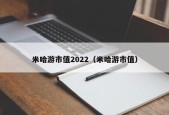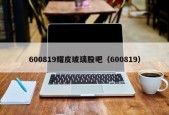康尼格拉的人力资源系统配方(康尼格拉)
- 资讯大全
- 2022-09-24
- 81
- 更新:2022-09-24 00:15:05
本篇文章给大家谈谈康尼格拉,以及康尼格拉的人力资源系统配方对应的知识点,希望对各位有所帮助,不要忘了收藏本站喔。
本文目录一览:
全球四大食品和饮料公司都是谁?
第一名 瑞士雀巢集团
第二名美国菲利普·莫里斯集团
第三名 英荷联合利华集团
第四名 美国百事可乐集团
第五名 美国可口可乐集团
第六名 美国康尼格拉集团
第七名美国马氏集团
第八名 法国达能集团
第九名 美国萨拉·李集团
第十名 日本雪印乳业集团
COMFEE和美的是什么关系?
美的和COMFEE都是美的集团旗下的品牌,为满足不同用户的需求,采用不同的设计团队,COMFEE有美的全球研发背景,在国内的售后体系一致,品质和服务同样可靠。与美的不同的是COMFEE面向全球年轻一代,在海外构建全球研发网络,遍布20个国家和地区

(Day 2)每日一文:《经济学人·商论》中英双语
THIS WAS supposed to be the quarter that Kraft Heinz showed America's huge, struggling food companies a new model for success. A merger in 2015 had joined two of the world's most iconic food makers. Backed by 3G Capital, a private-equity firm, the new group slashed costs at a pace that made rivals shudder and investors swoon. After a failed bid in 2017 for Unilever, an Anglo-Dutch giant, Kraft Heinz set out to prove it could not just cut fat but boost sales on its own. Bernardo Hees, the company's boss, pointed cheerfully to new products, including Heinz Mayochup and something called Just Crack an Egg. The company was on the path to "sustainable, profitable growth", he declared in November. Unfortunately, it wasn't.
On February 21st Kraft Heinz announced a staggering $15bn impairment, a dividend cut of more than 3o% and an inquiry into its procurement by the Securities and Exchange Commission (SEC). Earnings calls are often sleepy affairs. This one was a nightmare. Some of 3G's long-time critics are now clucking with satisfaction. Others fear 3G is tarnishing American treasures such as Kraft Macaroni and Cheese and Warren Buffett, who partnered with 3G to combine Heinz and Kraft and last year lost nearly $3bn on the deal. Yet dramatic as Kraft Heinz's decline may seem, 3G's impact and the food industry's problems extend far beyond it.
While its founders are Brazilian, 3G's buyout business is based in Manhattan.(Its most famous founder, Jorge Paulo Lemann, lives in Switzerland.) Unlike many big private-equity firms, 3G's main investors are not pension funds but family offices and individuals, including its partners. It does not have a wide portfolio, but backs just two companies: Kraft Heinz and Restaurant Brands International (RBI). Blackstone, a private-equity firm based a few blocks away, has nearly 2,5oo staff.3G's New York office has fewer than two dozen. Yet 3G's leaders have rocked the consumer industry like few investors in history.
All buyout firms are thirsty for deals, but 3G is uniquely parched. Before starting 3G, the firm's founders went on a beer-buying spree that culminated in 2o16 with Anheuser-Busch InBev's purchase of SAB Miller for more than $100bn. AB InBev, in which 3G's partners have a large stake, now brews more than one in four of the world's beers. Kraft Heinz counts Kraft cheese, Heinz Ketchup, Jell-0, Philadelphia Cream Cheese and Oscar Mayer among its holdings. RBI includes Burger King, Popeyes, a fried-chicken restaurant, and Tim Hortons, a popular Canadian chain.
The way 3G runs companies is as notable as its appetite for buying them. In a practice called zero-based budgeting, managers must justify their expenses anew each year. The idea is to expand margins continuously. Overseeing this are managers chosen for their talent and work ethic, rather than mere experience. Daniel Schwartz, a 3G partner, became the chief executive of Burger King at 32. Mr Hees, a 3G partner who spent more than a decade working for a Latin American railroad, became Kraft Heinz's boss at 45. David Knopf, its chief financial officer, assumed his position in 2017 at 29.
To 3G's detractors, this all seems a bit mad. The company's strategy can be caricatured as follows: buy a big business, cut costs, repeat. This is not entirely fair. RBI has invested in marketing Burger King, winning prizes for its ads. AB InBev is working to boost its sales, for instance by pushing higher-priced beers and deploying best practices across its vast geography.
But buying big companies and slashing costs remain 3G's speciality. The risks of that strategy have become clear. RBI struggled to integrate franchisees at Tim Hortons. AB InBev last year said it would slash its dividend by half.
Nowhere has 3G's approach played out more tumultuously than at Kraft Heinz. America's food industry seemed the perfect target, with flabby companies and powerful brands. Rare is the American who has not slurped Kool-Aid or downed an Oscar Mayer hot dog smothered in Heinz Ketchup.3G reckoned the brands were strong enough to withstand large cuts. As it turns out, they were not.
This was not the same for AB InBev, which despite abysmal results in America, has little beer competition from in-store brands, is rarely sold online and faces ample growth abroad. Kraft Heinz's business, by comparison, is concentrated in America, where the food industry is being turned on its head. Its brands may be familiar, but that does not make them popular. Small firms are offering healthier options, taking advantage of cheap digital marketing and nimble contract manufacturers. The smallest 20,000 packaged goods players account for about half the industry's growth, according to Nielsen, a research firm.
Meanwhile, the rise of e-commerce and European discount grocers has put pressure on food retailers, which are in turn squeezing food companies. Stores led by Walmart are using extensive data to launch their own, increasingly sophisticated, low-cost private label goods, all the while pushing companies to lower their prices.
Things started well for Kraft Heinz. Its operating profit margin surged from 15% in 2014 to 24% in 2017. The first big setback came that year when Paul Polman, then Unilever's boss, rebuffed the company's $143bn courtship.(Unilever, wisely, has devoted growing attention not to food but to beauty and household products.) Without his megadeal, Mr Hees turned to the basic work of lifting sales by pouring more money into advertising, product innovation and Kraft Heinz's sales force, but that ate into profits.
Equally striking is the company's new $15bn impairment, a recognition that the value of giant brands has shrivelled. Mr Buffett says that he misjudged the worth of Kraft's stable of products. "The management team entered into this merger with the assumption they could cut the spending needed to maintain brands, let alone help them grow," says Robert Moskow of Credit Suisse, a bank. "The world changed on them-retailers changed and consumers changed."
Flawed though 3G's approach may seem, few food companies offer a successful alternative. Companies have tried to evolve by buying smaller firms, often at lofty prices and with mixed results. For instance Campbell Soup bought Bolthouse Farms, a maker of fruity drinks, in 2o12, but is now trying to sell it. Last year it bought Snyder's-Lance, a pretzel and popcorn company, to boost its snacks business. Its debt level has risen accordingly. Indeed, shopping sprees at Campbell, ConAgra and General Mills have made those companies more levered than Kraft Heinz, according to Sanford C Bernstein, a research firm.
Kraft Heinz now wants to shrink to grow: it plans divestments over the next 18 months to improve its balance sheet so it can make other, big deals. But the SEC's subpoena suggests that some internal processes might be unravelling as managers struggle to meet bold goals. The notion that big deals will save American food firms looks increasingly dubious. In 2014, before Heinz bought Kraft, the combined gross operating profits of the companies were about $6.5bn. Now, due in part to some problems beyond its control, Kraft Heinz expects its 2019 profits to be about the same.
卡夫亨氏《Kraft Heinz)本应在这个季度向美国规模巨大但陷入困境的食品公司展示一种通往成功的新模式。2015年,两家全球最具标志性的食品制造商合二为一。在私募股权公司G资本的支持下,新集团以令竞争对手战栗、令投资者狂喜的速度削减成本。2017年收购英荷巨头联合利华失败后,卡夫亨氏开始想办法证明自己不但会减肥,还能凭自身提高销焦额。公司老板贝尔纳多·希斯(Bernardo Hees)兴高采烈地搬出新产品作例证,包括亨氏的蛋黄番茄酱(Mayochup)和一种叫“打个蛋”(just Crack an Egg)的食品。去年11月他查布公司正走在遇往可持续、有盈利的增长“的道路上。遗憾的是,并没有。
上月21日,卡夫亨氏披露了150亿美元的巨额减记、削减超过30%的股息,以及美国证券交易委员会(SEC)调查其采购部门的事宜。财报电话会议通常让人昏昏欲题,这一次却是一场露梦。一些长期批评3G资本的人现在难掩得意之情。另一些人则担心,3G资本正在玷污像卡夫亨氏通心粉和巴菲特这样的美国瑰宝。之前正是巴非特与3G资本联手促成了亨氏和卡夫的合井,去年他因这笔交易亏损近30亿美元。不过,尽管卡夫亨氏的业绩下滑看起来很惊人,3G资本的影响和食品行业的问题却远不止于此。
3G资本的几位创始人都是巴西人,但收购业务的总部设在曼哈顿。(公司最知名的创始人豪尔赫·保罗·雷曼[Jorge Paulo Lemann]住在瑞士。)与许多大型私募股权公司不同,3G资本的主要投资者不是养老基金,而是家族办公空和个人,包括它的合伙人。它的投资组合并不广泛,只支持两家公司:卡夫亨氏和国际餐饮品牌公司(Restaurant Brands International,RBJ)。私募股权公司需石(Blackstone)的总卸离3G资本只有几个街区,有近2500名员工,而3G资本纽约办事处的员工还不到24人。不过,3G贸本的领导者却震憾了整个消费行业,极少有投资者曾做到这一点。
所有的投资收购公司都渴望达成交易,但3G资本在这方面的热望独一无二。在成立3G资本之前,该公司的创始人掀起了一场啤酒业收购狂湖,在2016年百威英博(Anheuser-Busch InBev)以逾1000亿美元收购SAB米勒(SAB Miller)时达到顶峰。如今,由G资本的合伙人大量持股的百威英博酿造了超过全球四分之一的啤酒。卡夫亨氏的产品包括卡夫奶酪、亨氏番茄、Jell-O果冻、菲力奶油奶酪和Oscar Mayer肉制品。RBI旗下有汉堡王、炸鸡店Popeyes和颇受欢迎的加拿大连锁店Tim Hortons。
3G资本运营所持有公司的方式和收购它们的劲头一样引人注目。它采用一种“零基预算法”的做法,经理们每年都要重新证明他们的支出是合理的。此举是为了持续扩大利润率。而监督这一操作的管理层是因他们的才能和职业道德而不仅仅是经验被选定的。3G资本的合伙人之一丹尼尔·施瓦茨(Daniel Schwartz)出任汉堡王的首席执行官时才32岁。另一位合伙人希斯在一家拉美铁路公司工作了十多年,45岁时成为卡夫亨氏的老板。首席财务官戴维·克诺夫(David Knopf)2017年上任时才29岁。
对于3G资本的抨击者来说,这一切似乎有点疯狂。夸张一点说,该公司的战略就是:收购一家大企业,削减成本,然后再重复。但这么说并不完全公平。RBI在汉堡王的营销上投资,赢得了广告大奖。百威英博正努力提振销售,比如推销价格更高的啤酒,并在公司广阔的版图上应用最佳实践。
但收购大公司和削减成本仍是3G资本的专长。这种策略的风险已经变得很明显。整合Tim Hortons的加盟商让RBI不堪重负。百威英博去年表示将把股息削减一半。
3G资本的这套做法用在卡夫亨氏上时表现得最为混乱。美国的食品产业看起来是个完美的目标,因为该行业里企业臃肿但品牌强大。很少有美国人没喝过速溶饮料Kool-Aid,或是没吃过涂满亨氏番茄酱的Oscar Mayer热狗。3G资本认为这些品牌足够强大,能承受大幅成本削减。事实证明它们并不能。
百威英博的情况就不一样了。尽管在美国的业绩糟糕透顶,但百威英博几乎没有遇到过来自商店自有品牌啤酒的竞争,很少在网上销售,而且海外增长强劲。相比之下,卡夫亨氏的业务集中在美国,而美国的食品行业正在发生翻天覆地的变化。它的各个品牌可能为人熟知,但这并不能让它们大卖。小公司正利用便宜的数字营销和灵活的承包生产商带来的优势,提供给消费者更健康的选择。根据研究公司尼尔森的数据,规模最小的两万家包装食品公司占了整个行业增长的一半左右。
与此同时,电子商务和欧洲折扣杂货商的崛起给食品零售商带来了压力,它们继而又向食品公司施压。以沃尔玛为首的商店正在利用大量数据推出越来越精致且价格低廉的自有品牌商品,并始终在促使食品公司降价。
卡夫亨氏的开局不错。营业利润率从2014年的15%飙升至2017年的24%。2017年,卡夫亨氏遭遇了第一次重大挫折,时任联合利华老板的保罗.波尔曼(Paul Polman)拒绝了该公司1430亿美元的求购。(联合利华明智地将注意力越来越多地放在美容和家用品而非食品上。)巨额收购计划落空,希斯转而专注于提高销售额这项基础工作,将更多资金投在广告、产品创新和卡夫亨氏的销售队伍上,但这侵蚀了利润。
同样惹人注目的是该公司150亿美元的新一轮减记,这等于承认公司各大品牌价值缩水。巴菲特表示他错误地判断了卡夫众多产品的价值。“管理团队设想的是,合并之后他们可以削减品牌维护所必需的开支,更不用说帮助品牌成长了,”瑞信银行的罗伯特·莫斯可(Robert Moskow)说道,“世界在他们那里发生了变化——零售商变了,消费者也变了。”
3G资本的方法似乎存在缺陷,但极少有食品公司能拿出一个成功的替代方案。各大公司尝试通过收购规模较小的公司来自我进化,这些收购交易的价格往往很高,而收效不一。例如,金宝汤(Campbell Soup)于2012年收购了果汁饮料生产商Bolthouse Farms,但现在又想把它卖掉。去年它收购了一家椒盐脆饼和爆米花公司Snyder's-Lance,以扩大零食业务。它的债务水平也相应上升。研究公司盛博称,实际上,金宝汤、康尼格拉(ConAgra)和通用磨坊(General Mills)的疯狂收购使得这些公司的杠杆率比卡夫亨氏还高。
卡夫亨氏现在希望通过收缩规模来实现增长:它计划在未来18个月剥离资产以改善资产负债表,以便能实现其他大规模交易。但美国证交会的传票显示,由于管理层难以达到大胆的目标,一些内部流程可能正在瓦解。大型交易能拯救美国食品公司的想法看起来越来越不可靠了。2014年在亨氏收购卡夫之前,两家公司的总营业利润约为65亿美元。现在,一定程度上由于公司自身无法控制的一些问题,卡夫亨氏预计2019年的利润将与合并前大致相同。
今年市场会缺少那些厂品
会缺少这些产品:
需求飙升、新冠疫情的影响和其他推动当前供应问题的因素预计不会在2022年消失,某些材料和产品的短缺可能会继续存在。但随着企业在预测和应对潜在中断方面做得更好,这些影响可能不会那么明显。2022年可能是可预测的一年,但不会是完全缓解的短缺的一年。
1.半导体
对计算机芯片的高需求预计将在今年剩余时间内保持供应紧张。芯片被用于从汽车到家用电器的所有领域,企业向5G的广泛转变给生产商带来了额外的压力。根据德勤的一份报告,过去两年的半导体短缺预计将导致全球供应商和客户的收入损失超过5000亿美元。报告称,半导体生产商已采取措施提高产量,预计在新冠疫情之前宣布的资本支出项目今年将增加更多产能。尽管如此,这仍不足以满足今年的需求。例如,半导体供应商博通“在22年甚至22年之后到23年的整个过程中都被预订了,”首席执行官HockTan在去年12月的财报电话会议上表示。
2.铝
铝供应紧张给建筑业和难以获得足够铝罐的饮料制造商带来了问题。由于罐头短缺和其他供应链挑战,MonsterBeverage在第三季度“无法完全满足增加的需求”,联合首席执行官RodneySacks在11月告诉分析师。作为减少碳排放计划的一部分,中国去年削减了铝和其他能源密集型金属的产量,荷兰国际集团的一份报告发现,中国的初级产量比该银行的预期低120万吨。欧洲天然气价格飙升也促使一些生产商减产,加剧了全球供应形势。欧洲铝业在1月14日致欧盟的一封信中写道,自10月能源价格开始上涨以来,欧洲失去了超过65万吨的年产能。
3.食物产品
国外很多便利店甚至超市可能还没有摆脱空空的货架,因为劳动力限制和2022年作物生长季节的挑战可能会在今年剩余时间里保持高价和供应参差不齐。
快速传播的omicron变体颠覆了食品制造厂的运营,生病工人数量的增加提高了企业成本并限制了产量。MarieCallender's和Reddi-wip的所有者康尼格拉本月早些时候对分析师表示,“omicron缺勤率”有所上升,并预计中断将持续到第三季度。化肥和杀虫剂的短缺也让生产者警告称,今年的作物产量可能会减少。制造商CFIndustries的一位高管在11月告诉分析师,预计欧洲天然气价格飙升以及俄罗斯和中国对出口的限制。
关于康尼格拉和康尼格拉的人力资源系统配方的介绍到此就结束了,不知道你从中找到你需要的信息了吗 ?如果你还想了解更多这方面的信息,记得收藏关注本站。













有话要说...